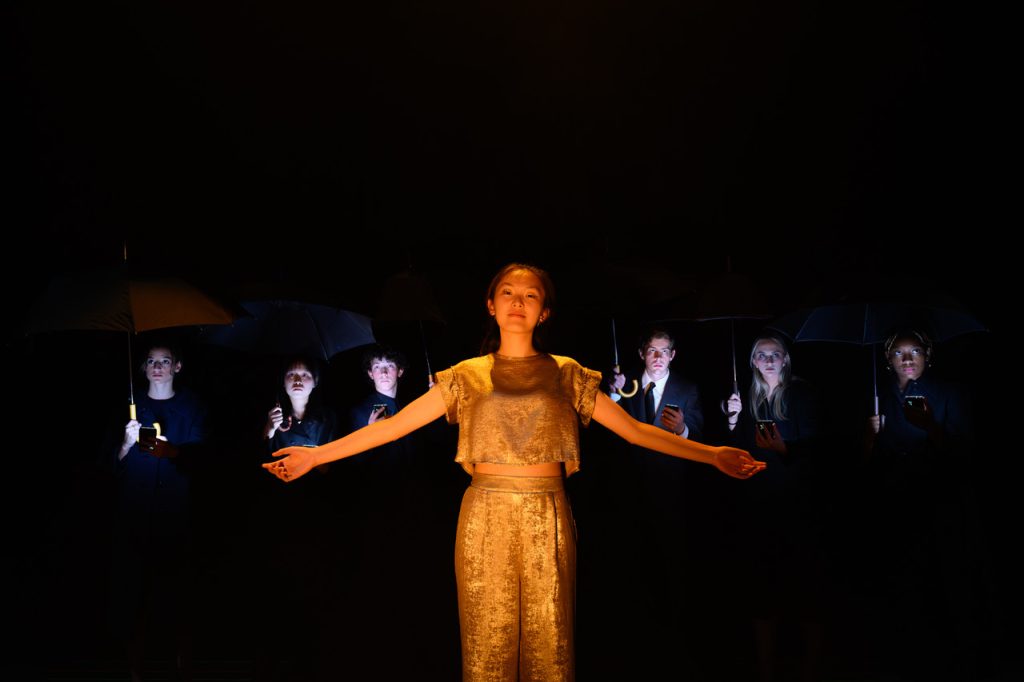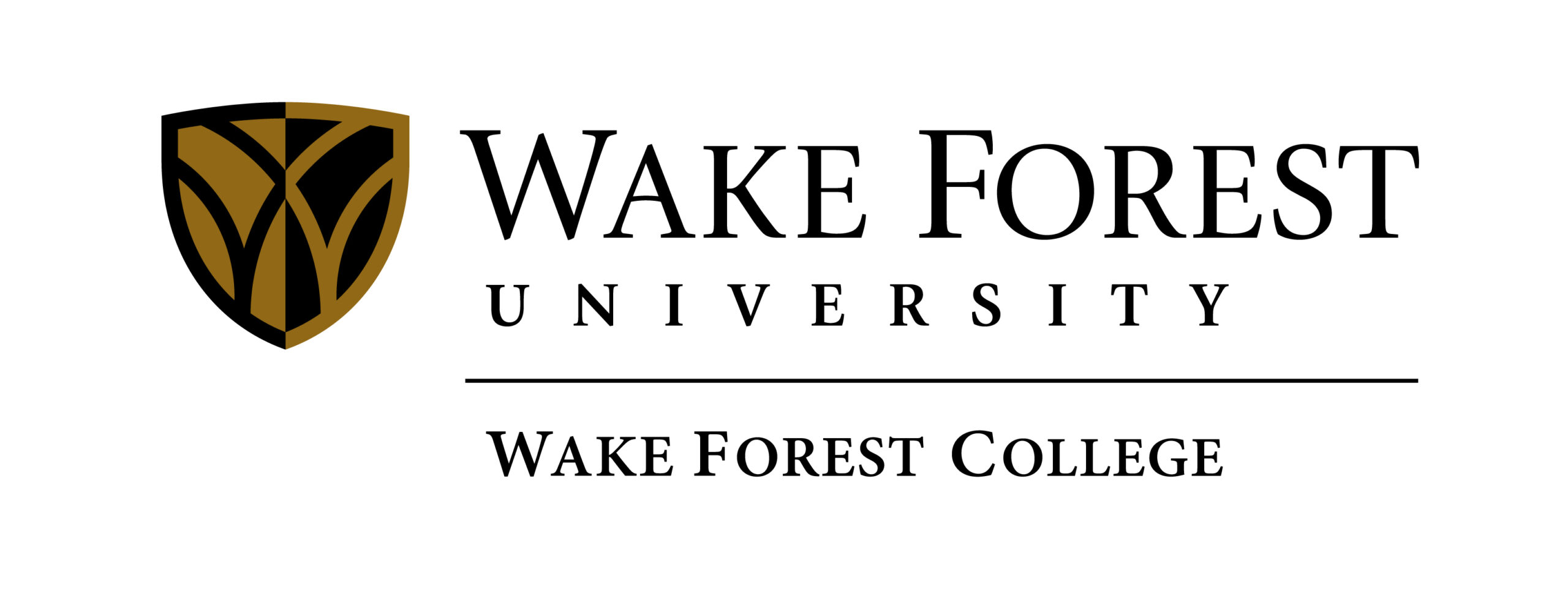On Directing ‘Love and Information’: Q&A with Stephen Wrentmore
By Erin Marlow, Communications Specialist in the Office of the Dean of the College
Love and Information takes the Tedford Stage this weekend, marking the first directorial performance at Wake Forest for new faculty member Stephen Wrentmore, Assistant Professor of Theatre and experienced director who joined the Department of Theatre this fall. Originally written by Caryl Churchill, the play showcases a montage of vignettes and characters to offer striking commentary on the information age and our place in it. As a part of the experience, there will be a pre-show discussion on neuroscience, philosophy, and religion on Thursday, November 7 at 6:00 pm.
The Dean’s Office recently spoke with Professor Wrentmore about his experience directing the play.
How do you think the play’s meanings have changed from the time it first debuted in 2012 to now in 2024?
One of the most startling things is that the play explores the future and investigates theories and ideas now considered everyday reality. The iPhone was in 2007; Instagram was in 2010; and Twitter and other social media were all in their infancy. Yet, this play talks about the corrosive impact of our connection with technology. For example, there is a scene where a character builds a virtual partner: an A.I. lover before A.I. was in common parlance. The play is scary in its foresight. And there are scenes that speak of catastrophes we continue to endure, like war, the impact of war, climate disaster, and environmental change. And it examines eternal ideas of love, faith, and the meaning of life. It endures, I think, because it deals with global political ideas rather than national or local politics, and it collides those ideas with everyday realities: you can’t have a baby; I love you and you don’t love me; break-ups; perceptions of wrong-ness and right-ness; and the shady area in-between.
Churchill is such a brilliant writer that it feels like every scene has been paired down to its quintessence. All the information is there but occluded, and the play asks the audience to meet it on the journey. The play is also interested in dialogue with the audience. It throws a ‘What do you think?’ at us, flips the idea inside out, and takes on a new scenario.
I recently read this quote in The Guardian from Tamara Rojo, artistic director of San Francisco Ballet: “I think A.I. is going to change everything. We just don’t know quite how.”
I think this play, way back in 2012, wrestled with some of these thoughts — we knew technology would change our world, and we saw it in the films of Kubrick and James Cameron — yet, brilliantly, Churchill grounds these stories in the everyday.
What have you enjoyed most about directing Love and Information?
One of my favorite books as a kid was Douglas Adams’ The Hitchhiker’s Guide to the Galaxy. In it, Adams offers the solution to the meaning of life, the universe, and everything as ’42.’ The challenge is that we don’t know the question, and not understanding the question creates an answer you can’t interpret.
What I have loved about this play is that it offers so many paths one could creatively wander down, all revealing a different truth in the scene; so artistically, it has been a process of tone and feel on top of the usual creative process of bringing a text to life. Collaborating with my faculty colleagues in world-building and with the students has also been fantastic. Bringing the play into the student’s orbit so we can understand and tell the story together has been a delight.
What was a major challenge you faced?
It’s BIG. And it is an ‘open’ text. This means words and line breaks are on the page, but no scene location, practical information, or guide. There are also no character names, no gender delineation, and no staging instructions, so every decision takes us into one world knowing that you, therefore, are not choosing another. So it has become a process of letting go and doubling down as we reveal the idea of the scene. Each moment is also a choice. Some are culturally specific, while others morph in meaning over time and with location.
I have worked like this before with plays by Caridad Svich and Martin Crimp, but, for some of our students, the revelation and reality of navigating the experience on the page was new.
Also, as director, it is a lot to carry: 100 characters in around 60 scenes (and the transitions from one scene to the other). It is a logistical assault course. The stage management team has done a fabulous job mapping furniture routes, where people need to be, what they need to be wearing, and what they are carrying. The cast has been magnificent in their gung-ho leap of faith. Without this, the production would fail.
What do you hope the audience will gain from the experience of watching this style of play with so many vignettes and collage of characters?
This is my first show at WFU, and I would love to think I bring a different energy and style to compliment my colleagues. Because the play does not have a narrative thread, the audience is led through scenes that, collectively, create a deeper and more complex whole. I hope they engage with the theatricality of the experience and see that, while the show uses media and technology, the totality of the production is conceived to be uniquely theatrical. The complete experience is created by consideration of the play, its ideas, and the space in which they are shared. It would delight me to think that audiences came away feeling like they had experienced something completely different and that the ideas within the play (and production) sparked conversations over the subsequent weeks.
For first-time audience members, is there anything you think the audience should pay close attention to?
I offer three things: firstly, don’t worry about what you do or do not understand; the play is a total experience and not a test. There isn’t a right or wrong interpretation, and allowing yourself to experience without judgment might be more rewarding than trying to ‘solve’ the text. Secondly, observe how the design team and I have created an immersive wrap-around experience in the space, joining apparently unconnected vignettes into a narrative. Finally, enjoy the dexterity of our performers as they morph between characters and ideas to bring this extraordinary play to life.
The pre-show symposium will be a great way to spark new avenues of thinking about the play’s major themes. What about Love and Information lends itself so well to discussion?
Where better than at a liberal arts university to bring brilliant people together to share ideas on the complexity of being human? I am so grateful to Wake The Arts Foundation and my department for supporting this event; when pieces like Love and Information come from a place of such intellectual rigor, it is great to have a broader conversation about some of the foundational themes.
The symposium aims to bring colleagues from various disciplines across the campus to share their insights and responses to the play. In a sense, the play is the catalyst for unknown conversations — or serendipitous encounters — the ‘I didn’t know I needed to talk about this until it appeared in front of me.” Perhaps some of the contemporary experiences we are living will be illuminated by exploring the themes of the play through multiple lenses; on the panel, we have Dr. Kevin Jung, Professor of Theological Ethics and Moral Philosophy; Dr. Stavroula N. Glezakos, Chair of Philosophy; Dr. Anthony Sali, a cognitive psychologist; and Dr. Fan Yang, who researches ethical A.I. Together, gathered around the ideas and conjunctions of the play, we hope to have a shared, interwoven conversation about how we find, well, love and information in an increasingly complicated world.


In a sense, the play is the catalyst for unknown conversations — or serendipitous encounters —the ‘I didn’t know I needed to talk about this until it appeared in front of me.’ Perhaps some of the contemporary experiences we are living will be illuminated by exploring the themes of the play through multiple lenses.
Stephen Wrentmore

